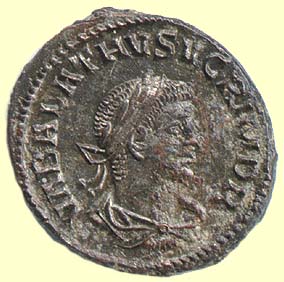 Contents -
Previous Article -
Next Article
Contents -
Previous Article -
Next Article
The Syrian city of Palmyra was an important trading center on the Old Silk Road between the Roman Empire and the Far East. Caravans bearing goods and gold in both directions stopped here to trade their wares. Consequently, Palmyra's economic importance continued to grow throughout the early part of the Third Century.
Palmyra enjoyed a status somewhere between that of a client kingdom and a major Roman province. Certainly the city functioned more autonomously than other Roman provinces. This was especially true of the turbulent period of the Third Century when Gallienus was fighting off rebellions in Gaul and invasions by the Germans.
Odenathus, the client king of Palmyra, was murdered in A. D. 267. His able wife, Zenobia, took over the government and ruled in the name of her son Vabalathus. The Romans somehow didn't see things their way. Perhaps the province was edging too close to independence. At any rate, neither Gallienus nor Claudius Gothicus saw fit to confirm Vabalathus' titles. Vabalathus and Zenobia rebelled in 271, and were defeated by Aurelian in 272. The new Roman emperor Aurelian was an excellent military tactician and a talented administrator. He was also one of the most merciful Roman emperors in history. He allowed both rebels to live after they marched in his triumph. In fact, Aurelian gave Zenobia the status of a Roman matron and a nice villa to which she was allowed to retire.
Go to next article on Emperor Tacitus
Go back to previous article on Emperor Aurelian